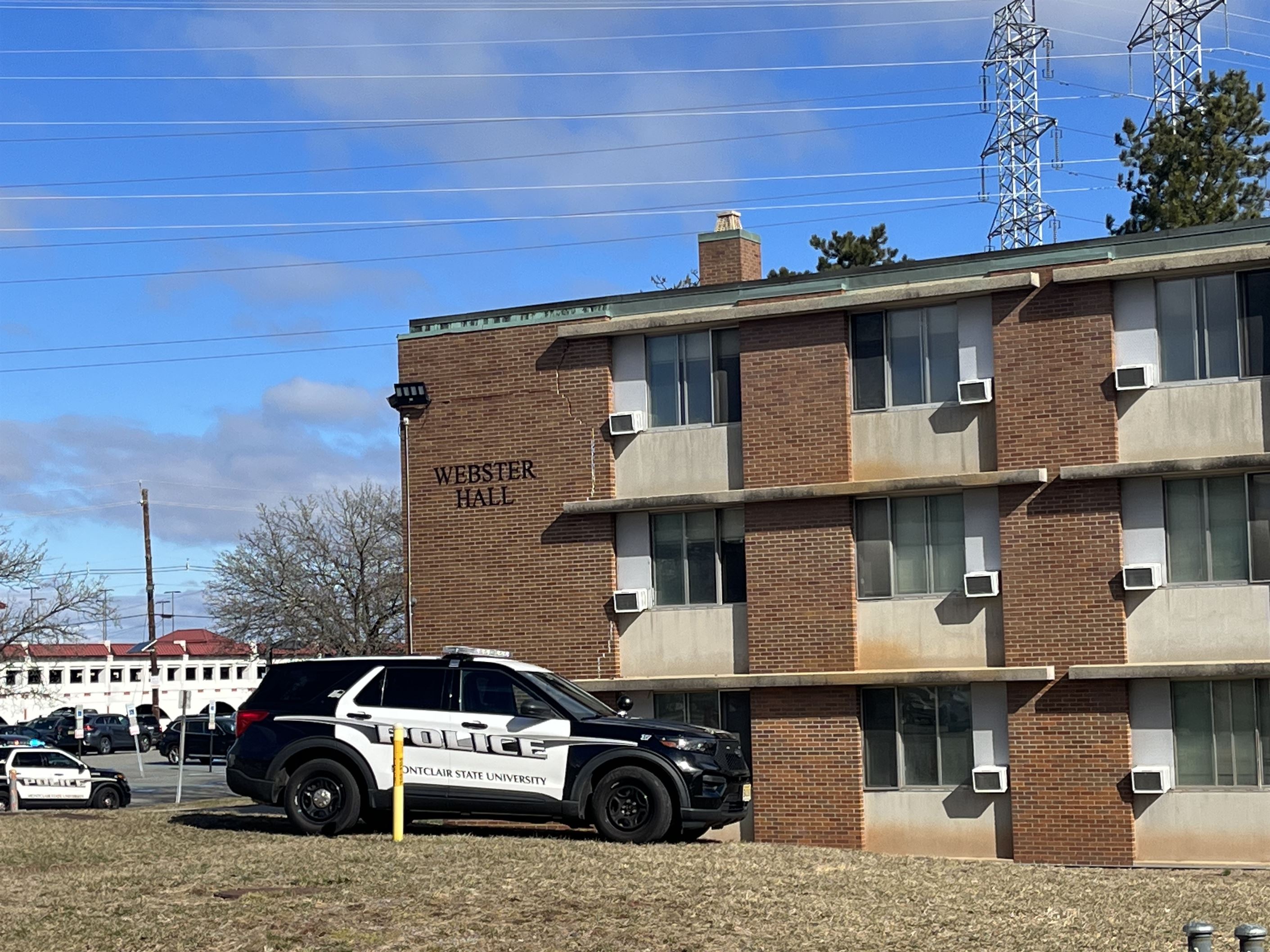Montclair State University held the first of a series of safety drills on March 8. The drill took place in Webster Hall and it mimicked a real-life emergency.
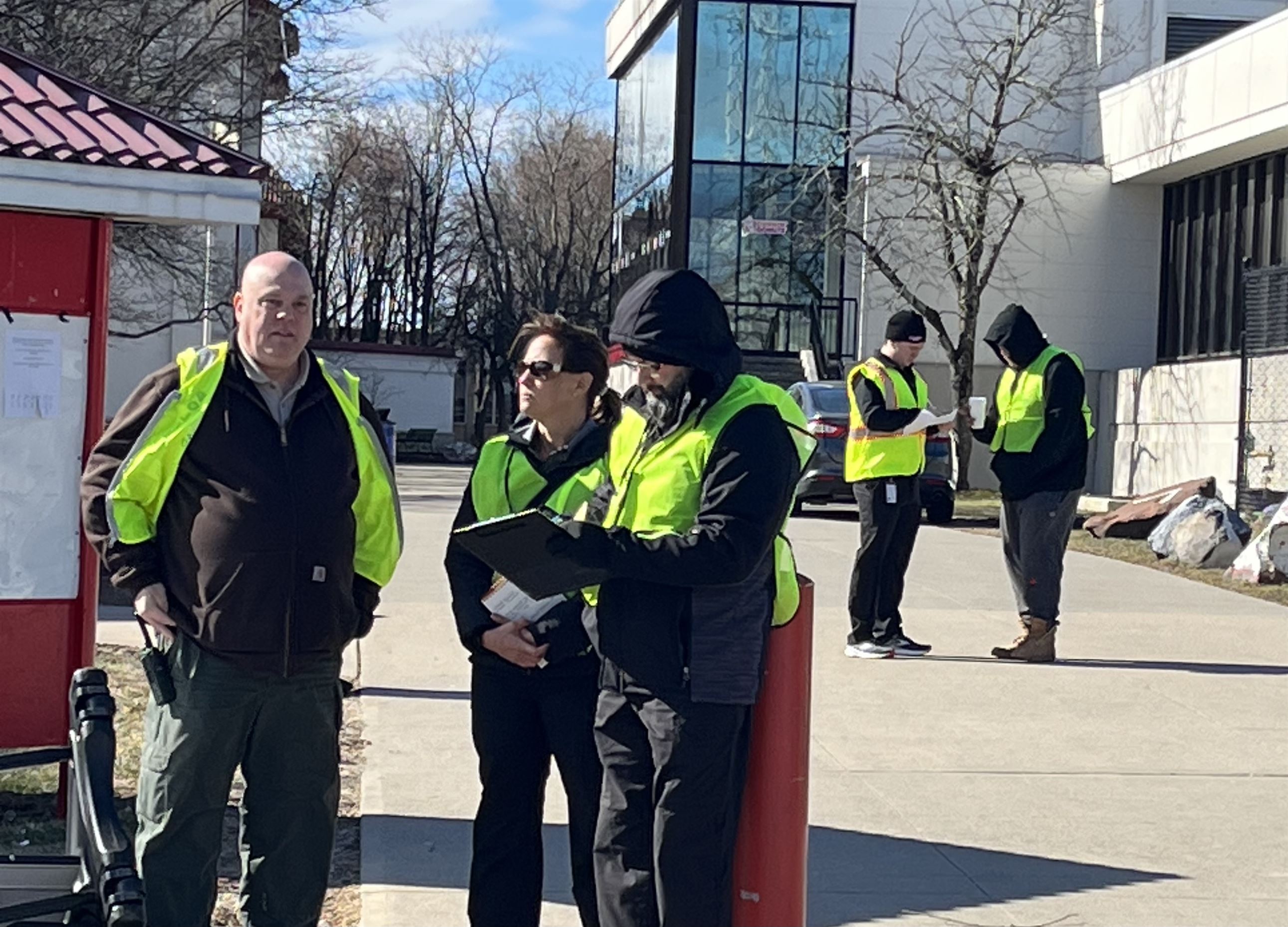
Participants prepare for the safety drill.
Jenna Sundel | The Montclarion
The drill utilized actors and gave first responders the opportunity to practice their training and prepare for emergencies, such as an active shooter.
The exercise included university police, EMS and firefighters. They also enlisted support from surrounding towns and organizations, including Clifton, Little Falls, Montclair, the Passaic County’s Sheriff’s Office Special Teams and Mountainside Hospital.

Montclair State EMS participated in the safety drill.
Jenna Sundel | The Montclarion
Kieran Barrett, chief of Montclair State’s police department, explained the reasoning behind the drills.
“While we want our community to also be educated on what they should do, we have to start with our first responders, because if they don’t know where to go, if they don’t know what to do in the event of an emergency, we have a breakdown,” Barrett said.
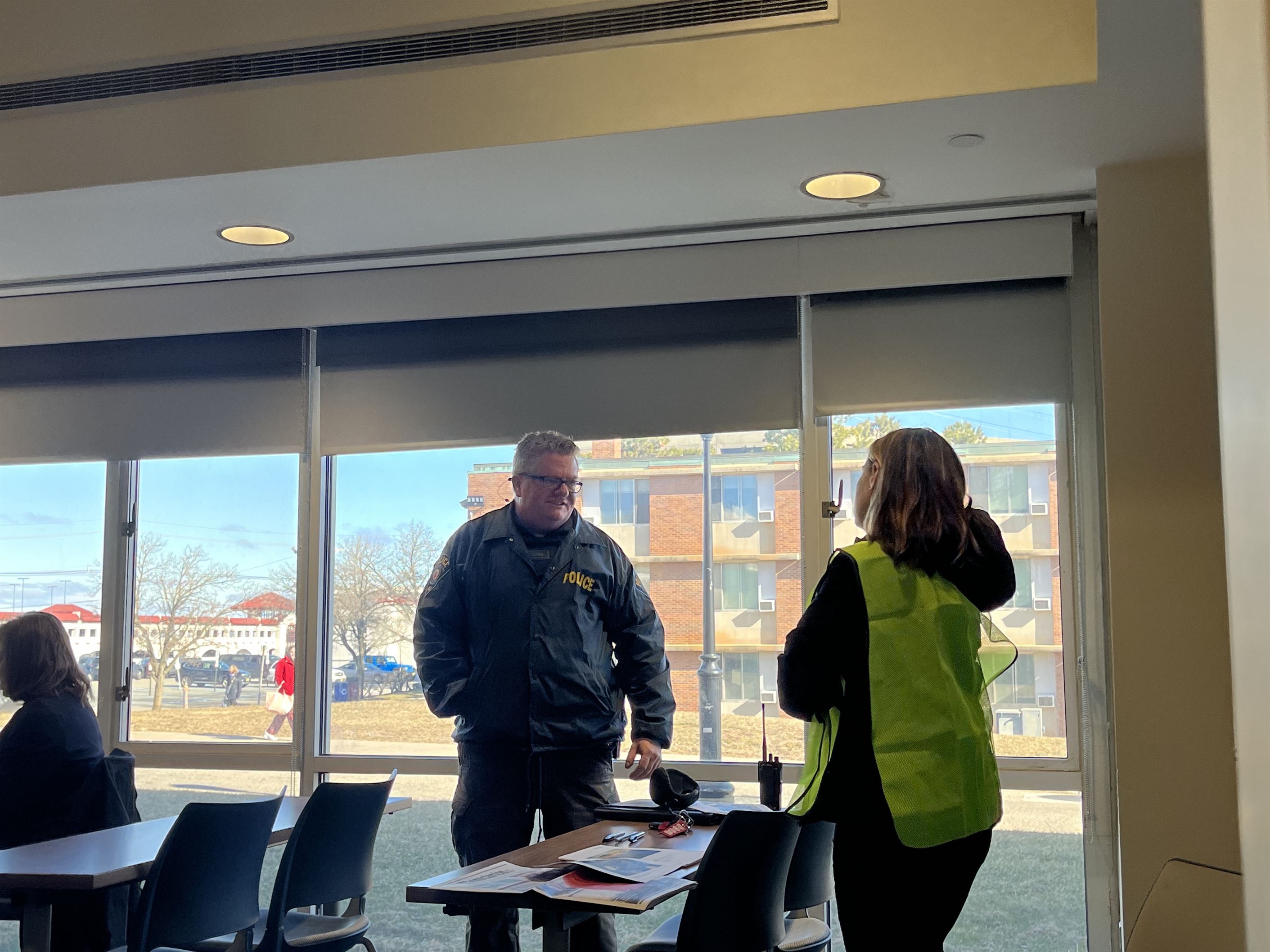
Kieran Barrett coordinates the drill from the "command center," located in Science Hall.
Jenna Sundel | The Montclarion
Barrett explained that the recent Michigan State University shooting is something the university is keeping in mind, but the drill was planned far in advance.
“A lot of people said ‘Well, did you just plan this because of Michigan State?’ And that’s actually just not the case,” Barrett said. “We started planning this back in November.”
Even in the case of an unexpected emergency, Barrett said there are steps people can take to ensure their safety.
“We want to make sure that people know how to be safe, how they can be safer, what they can do for us and what they can do for themselves in the event of an emergency,” Barrett said.
This is not the first time the university has conducted a drill, but it has been a while since the last one. Barrett said the coronavirus (COVID-19) is one of the reasons why drills have not been conducted in recent history.
“This [is] not the first time we are having a drill, it is in recent history because of [COVID-19],” Barrett said. “First of all, we didn’t have a community here, and then [people] got bridged in a little bit slowly but surely. So it’s well past time that we got back to this.”
Barrett monitored the response along with other officials from the “command center,” a room located within Science Hall. He communicated with first responders on the scene and strategized with others in the command center.
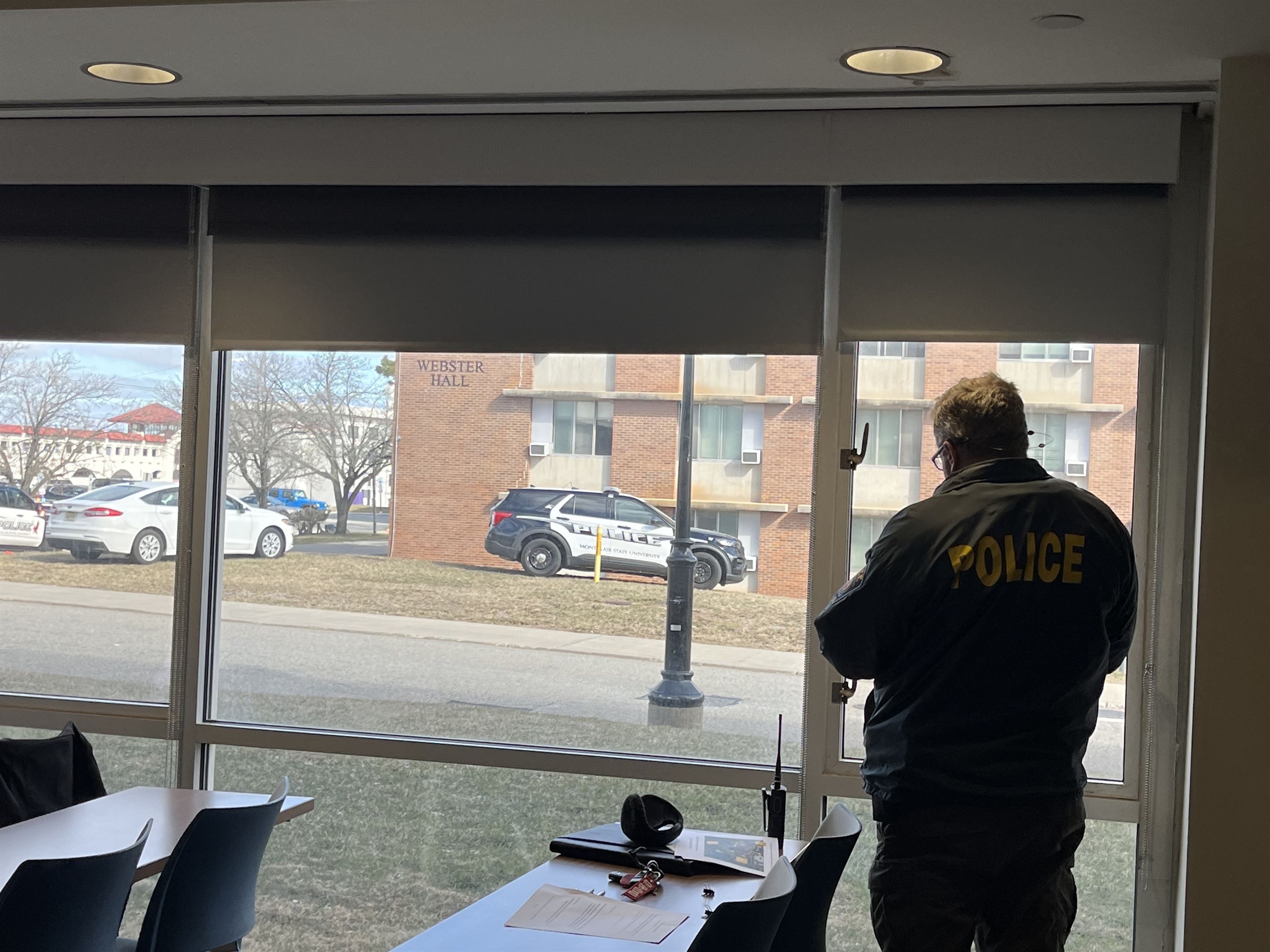
Kieran Barrett oversees the drill from the command center.
Jenna Sundel | The Montclarion
Dawn Soufleris, vice president for student development and campus life, was in the command center as well. She explained what she hopes to gain from this drill.
“I see this as a real learning opportunity today so we can see what we did well, and what maybe we need to work on and focus upon,” Soufleris said. “I think these things are incredibly important because we have to practice. We have to practice and know what we need, how we need it, where it needs to be.”
Another person in the command center was Gena Coffey, assistant director of environmental health and safety.
“I’m on the safety team, [so] the goal is to just to watch and make sure that nobody gets hurt physically, but also to see what happens and what we need to do to be better prepared,” Coffey said.
While the drill took place during spring break, some students and faculty were still on campus and observed the drill as they passed by.
Stephen Conte, a senior mathematics major, shared his reaction to the drill.
“It definitely caught my attention,” Conte said. “My first assumption is that it was a police exercise, I thought it was for an active shooter, and I think it is a good test to definitely run.”
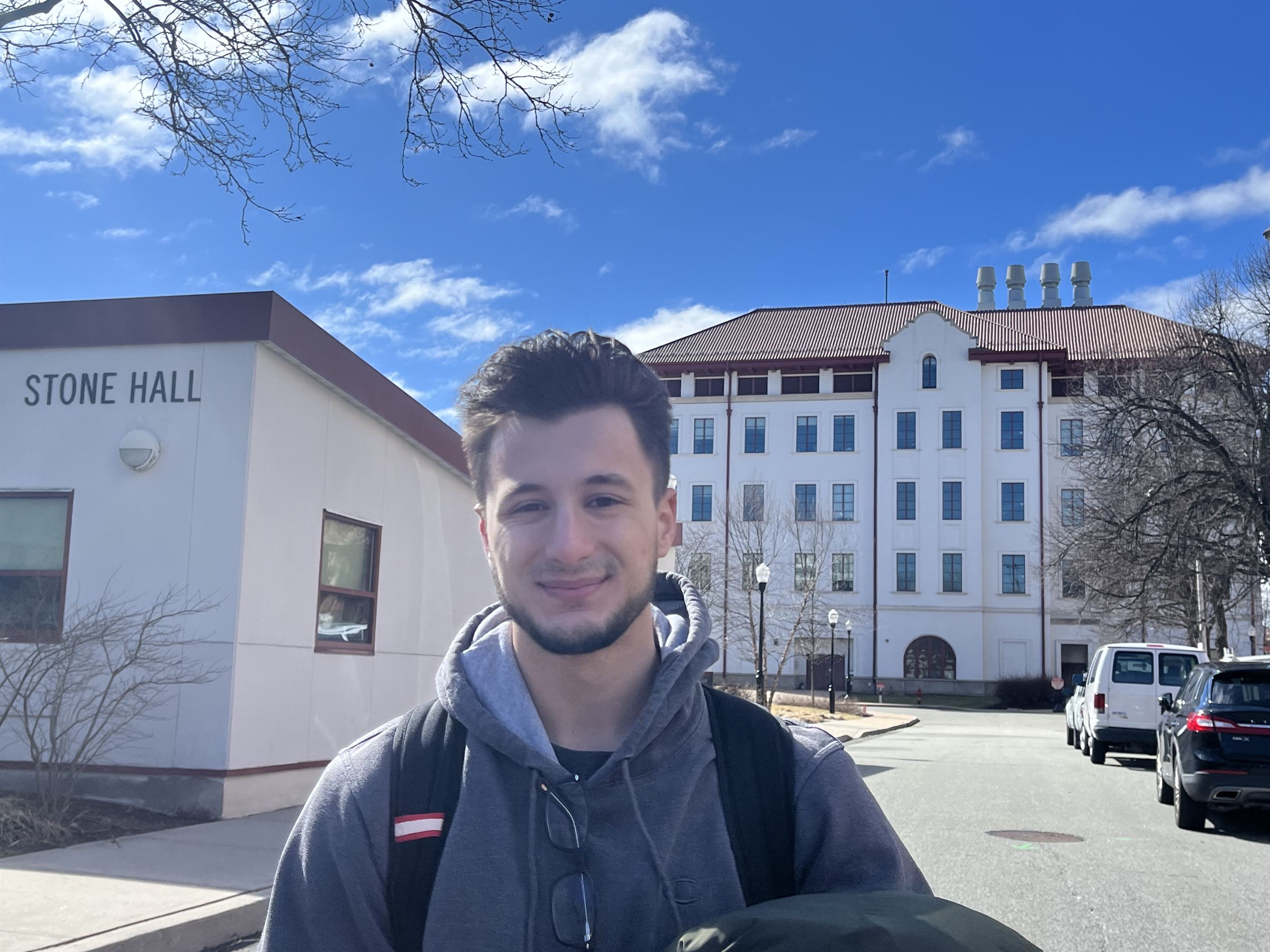
Stephen Conte, a senior mathematics major, says the drill caught his attention.
Jenna Sundel | The Montclarion
Justin Savage, a research and reference librarian at the university, said he supports the university conducting this drill but wonders how prepared they can be in the case of an emergency.
“I don’t know how well you can prepare for something that crazy, but I’d like to hope [they are prepared],” Savage said.
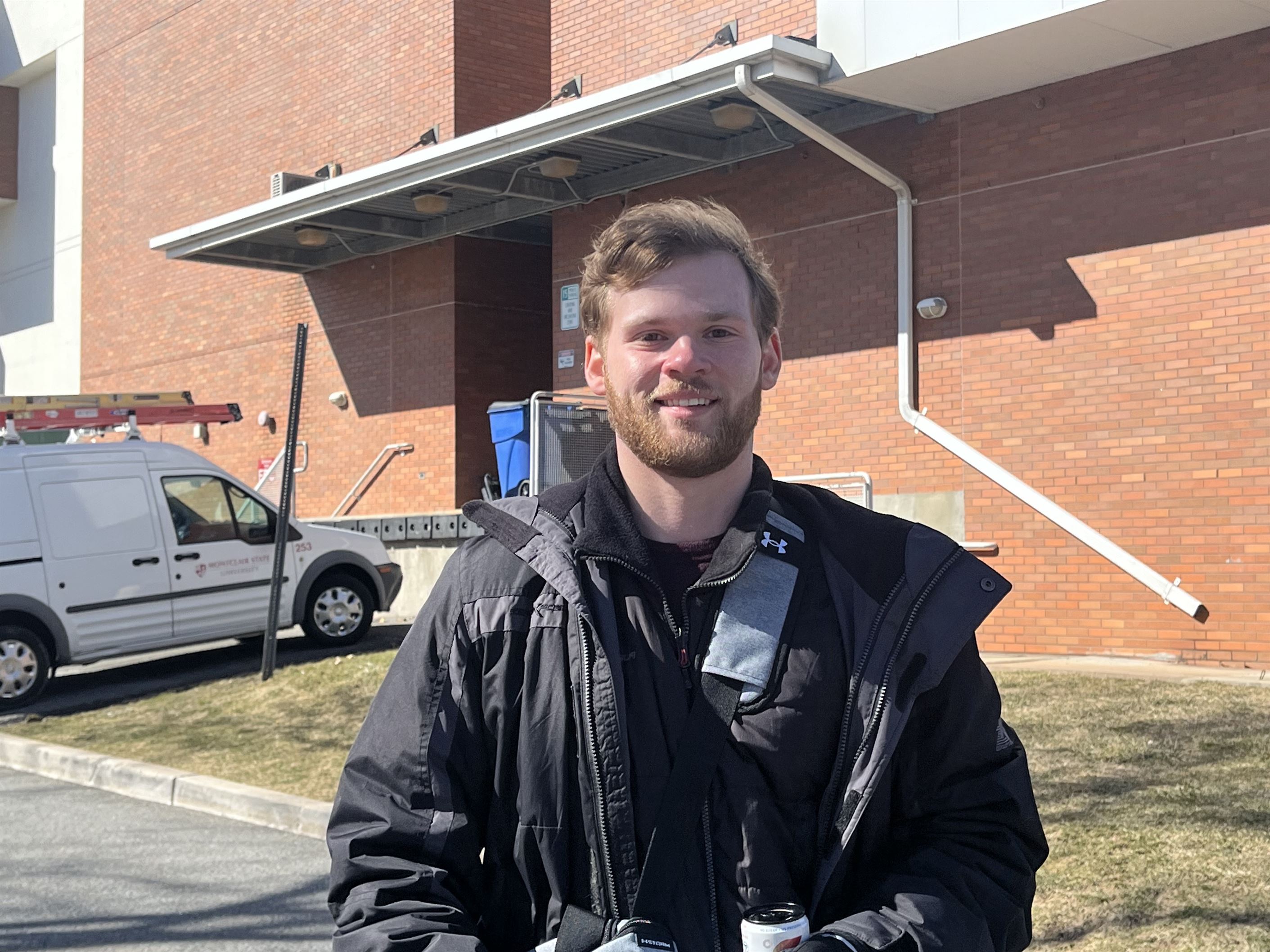
Justin Savage, a research and reference librarian, shares his reaction to the drill.
Jenna Sundel | The Montclarion
Barrett explained that it is too soon to share the results of the drill.
“We will be reviewing all components from communications, law enforcement, EMS and others,” Barrett said. “It is too soon to say what would need improvement.”
Barrett shared his overall impression of the drill.
“Overall, this was a tremendous exercise for us to learn and adapt,” Barrett said. “It was carefully planned by our Director for Emergency Planning Rich McAuliffe. The hope is that we realistically try to demonstrate an actual incident and that responding agencies are tested.”
According to Barrett, another safety drill will be held next month and more will follow in the near future.

